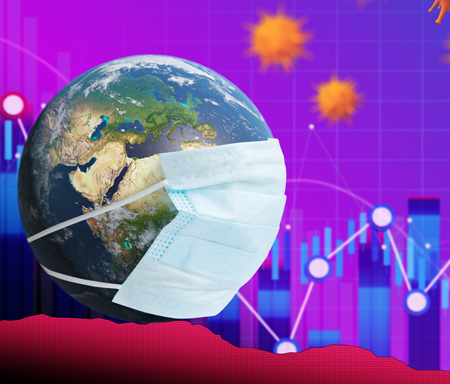One of the many things that the COVID pandemic has lifted up is a better general understanding of the global pharmaceutical industry, how it works, and how it potentially impacts every life on the planet.
global pharmaceutical industry, how it works, and how it potentially impacts every life on the planet.
The common and too-easy approach that many news organizations and uninformed politicians have is that “big, bad pharma charges high prices for their products and takes advantage of the misfortunate with heartless business practices.” Their case in 2022 and beyond has very little merit as the world benefits from the miraculous innovations of companies like Pfizer, AstraZeneca, J&J, Merck, and Gilead who have selflessly done what’s right and pivoted resources and capital towards helping to solve the pandemic. Is there anyone reading this who has thought about what the world would be like today if there wasn’t a vaccine?
As a result of the efforts of industry leaders, the world now has total transparency into the costs and risks that are associated with drug development and how the pharmaceutical companies partner with the right stakeholders (researchers, governments, etc.) to minimize the overall cost burden and increase the odds of positive outcomes. Sure, there may be some rewards, but nobody was thinking about rewards when Gilead donated all of those doses of Remdesivir to those in need.
The process of drug development is complex and costly. In times of emergency like we have now, companies pursuing solutions do so at the cost of their core businesses understanding that chances of success are small. But they have to try because that’s what great companies do. And it is also what great countries like the United States and the United Kingdom do. As we now see, this isn’t an “us versus them” scenario. It is an us and them scenario where governments, specifically the United States and the UK work with the pharmaceutical companies to optimize the investments and potential outcomes of the results. It’s really not a lot different from how the government works with defense companies like Lockheed-Martin and L3Hariss to collaborate on defense solutions.
In thinking about the economics, the US COVID-19 vaccine success didn’t happen by itself. It was enabled by years of long-term investments and collaborations between the federal government and scientific organizations in the areas of basic science pre-clinical development, clinical trials, and managing the supply chain in difficult times. And remember, we have vaccines in less than a year because the US government removed the majority of traditional industry risks related to vaccine development including scientific failures, failures to demonstrate safety and efficacy, manufacturing risks; and market risks related to low demand. What an interesting lesson!
Estimates of direct public spending on the development and manufacturing of COVID-19 vaccines vary considerably based on the range of sources examined and the timing of data collection. If you google various data points on this, you will discover many perspectives and not a lot of hard data. For example, recent estimates from the Congressional Research Service, the Government Accountability Office, and Chad Brown and Thomas Bollyky along with data on the GHIAA.org and Devex websites provide government spending estimates of between $18 billion and $23 billion. Most recently the Congressional Budget Office estimated that the Biomedical Research and Development Authority (BARDA) alone has spent $19.3 billion on COVID-19 vaccine development. In addition, Lisa Cornish projected $39.5 billion in US spending. As you read this, remember that companies I refer to like Pfizer took absolutely zero dollars from the US government to bring their vaccine to market.
Vaccine vs. Pills vs. Hospitalization
In the world of healthcare economics there is so much data that every side of the spectrum can manipulate it the way they want to. But here is the bottom line; there is a cost to the system and companies who get that and work with governments to do the right things should be commended.
The facts are these:
- According to Healthcare Finance, a person sick with COVID who is admitted to the hospital for a 6-10 day period costs about $50,000 - $80,000. And that’s if they live.
- Now that Pfizer and Merck have launched their COVID pills, which can be taken at home, the typical cost of treatment is about $600.
- The average cost of a vaccination (most people in the US get it for free as it is paid for by the federal government) is only about $20.
You don’t have to be an expert in business acumen or financial wizard to do the math. Even though the infrastructure to build the vaccines cost billions, the alternatives in term of hospitalizations, deaths, and the potential implosion of the global economy don’t come close to comparison.
To summarize the points of this blog, I close with a quote my friend Albert Bourla, President & CEO of Pfizer gave to the Financial Times when asked about the investments Pfizer made toward getting their vaccine to the public in record time, “Bourla told his board of directors if the vaccine race was lost then the company would have more to worry about than a write-down. ‘The world would have entered a recession like the old times, back to the 17th century,’ he says, referring to the General Crisis in western Europe. ‘In crises like that, what is tested is not just the economy. Everything collapses. How many divorces will come? How many suicides? So, if we lose $2bn, we have way bigger problems.”




